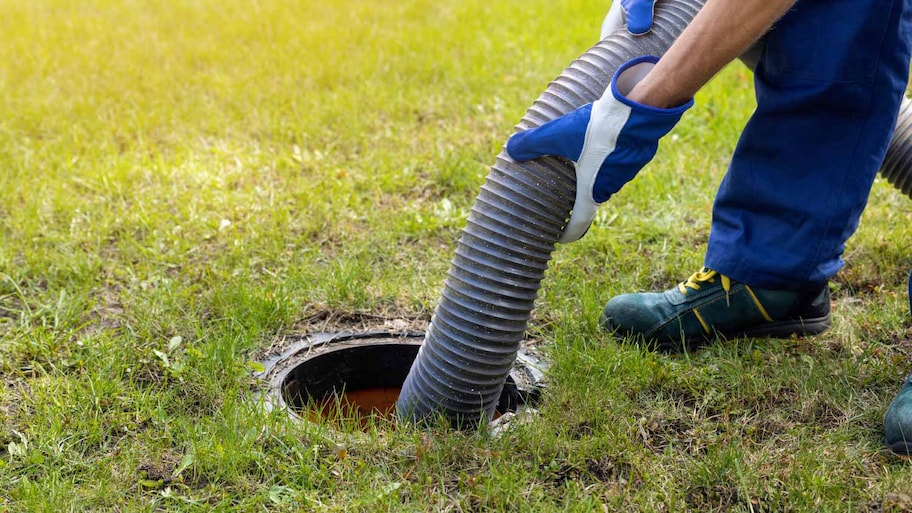Introduction to Septic Tank Pumping
Septic tanks play a crucial role in managing household wastewater in areas not connected to a municipal sewer system. Regular maintenance, including pumping, is essential to ensure their efficient operation and to avoid costly repairs or replacements. This blog post provides a practical guide to septic tanks pumping, highlights signs of drainage issues, and offers cost-effective solutions to keep your septic system in top condition.
Understanding the Importance of Septic Tank Pumping
What is Septic Tank Pumping?
Septic tank pumping involves the removal of sludge, scum, and liquids from the septic tank to prevent overflow and system failure. Over time, solid waste accumulates in the tank, reducing its capacity and efficiency. Regular pumping helps maintain the balance of the system, ensuring that wastewater is effectively processed and dispersed.
Benefits of Regular Pumping
Regular septic tank pumping offers several benefits:
- Prevents Blockages: Removing accumulated waste prevents blockages in the pipes and drain field.
- Extends System Lifespan: Proper maintenance prolongs the life of the septic system.
- Protects Health: Prevents the contamination of groundwater and surface water, safeguarding public health.
- Saves Money: Reduces the risk of costly repairs or system replacements due to neglect.
Signs Your Septic Tank Needs Pumping
Slow Drains and Backups
One of the most common signs of a full septic tank is slow draining sinks, showers, and toilets. If you notice that water is taking longer to drain or if you experience frequent backups, it’s a clear indication that your septic tank needs attention.
Unpleasant Odors
Foul smells around your septic tank, drain field, or inside your home can signal that your septic tank is full. These odors result from the accumulation of waste and gases in the system, indicating that it’s time for pumping.
Lush, Green Grass Over the Drain Field
While a green lawn is often desirable, unusually lush and fast-growing grass over your septic drain field can be a sign of trouble. It suggests that excess waste is seeping into the soil, providing additional nutrients and indicating that your septic tank is likely overflowing.
Pooling Water
Visible pooling water or muddy soil around the septic tank or drain field, especially during dry weather, is a strong indicator that your septic system is failing and requires immediate pumping.
Practical Guide to Septic Tank Pumping
How Often Should You Pump Your Septic Tank?
The frequency of septic tank pumping depends on several factors, including the size of the tank, the number of people in the household, and water usage. As a general guideline:
- Every 3 to 5 Years: For average households with moderate water usage.
- More Frequently: For larger households or those using more water, consider pumping every 2 to 3 years.
- Less Frequently: Smaller households or those with low water usage may extend the interval to 5 years.
Choosing a Reliable Septic Tank Pumping Service
Selecting a professional and reliable septic tank pumping service is crucial for effective maintenance. Look for companies with:
- Experience and Reputation: Check reviews and ask for recommendations.
- Proper Licensing and Insurance: Ensure the company is licensed and insured to handle septic systems.
- Transparent Pricing: Request a detailed estimate and ensure there are no hidden fees.
- Prompt and Efficient Service: Choose a company known for timely and efficient service.
The Pumping Process
Understanding the pumping process can help you prepare and ensure it is done correctly:
- Inspection: The technician inspects the tank and assesses its condition.
- Pumping: A hose is inserted into the tank to remove the waste.
- Cleaning: The tank is cleaned, and any accumulated sludge or scum is removed.
- Inspection Again: After pumping, the technician checks for any signs of damage or leaks.
- Report and Recommendations: You receive a report detailing the service performed and any maintenance recommendations.
Cost-Effective Solutions for Septic System Maintenance
Regular Inspections and Maintenance
Regular inspections and maintenance can identify potential issues before they become major problems. Schedule annual inspections to ensure your system is functioning correctly and to address any minor issues promptly.
Water Conservation
Conserving water reduces the load on your septic system, prolonging its life and efficiency. Implement water-saving measures such as:
- Fixing Leaks: Repairing leaky faucets and toilets.
- Installing Low-Flow Fixtures: Using water-efficient toilets, showerheads, and faucets.
- Spreading Out Water Usage: Avoiding heavy water use all at once by spreading laundry and dishwasher loads throughout the week.
Proper Waste Disposal
What goes down your drains can impact your septic system. Avoid flushing or disposing of non-biodegradable items, grease, chemicals, and medications into your septic system. These can cause blockages, kill beneficial bacteria, and lead to system failure.
Landscaping Considerations
Proper landscaping around your septic system can prevent damage. Avoid planting trees or shrubs with deep roots near the tank or drain field to prevent root intrusion, which can damage the system.
Conclusion: Keeping Your Septic System Healthy
Regular septic tank pumping and proactive maintenance are essential for the health and longevity of your septic system. By recognizing the signs of a full tank, scheduling regular inspections, conserving water, and properly disposing of waste, you can ensure your septic system operates efficiently and cost-effectively. Investing in regular maintenance not only protects your property and the environment but also saves you from expensive repairs in the future. Keep your septic system in top condition and enjoy peace of mind knowing your wastewater is being managed safely and effectively.

